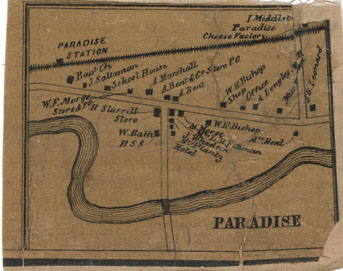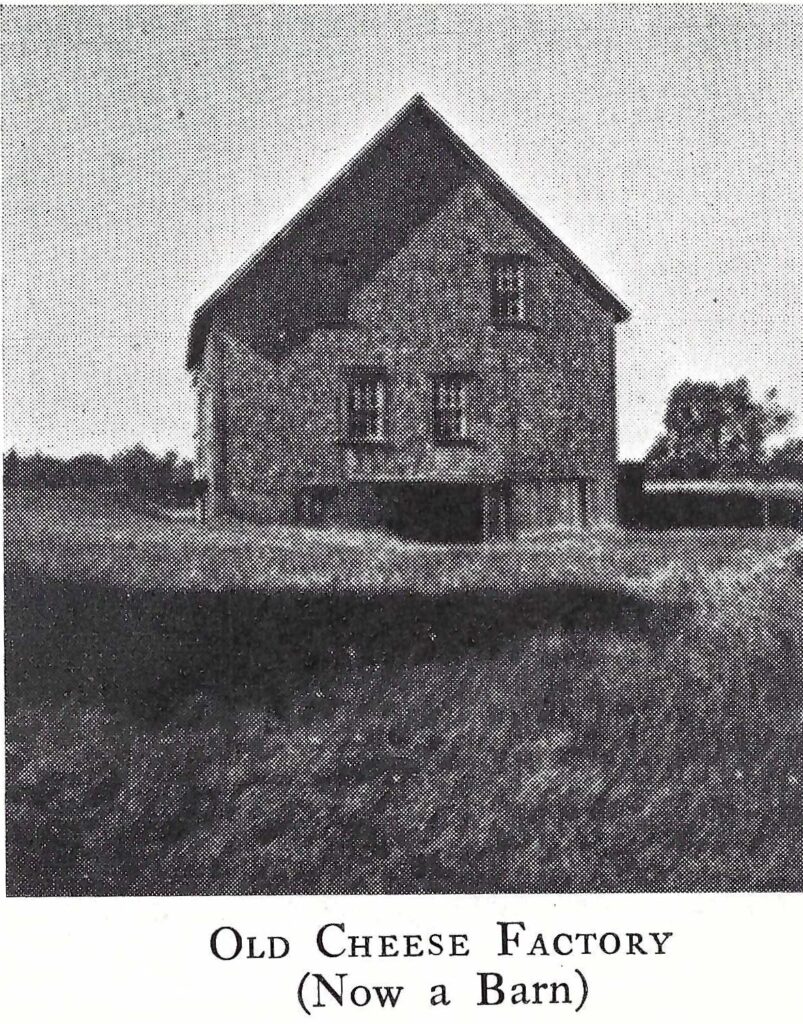The Paradise Cheese Manufacturing Company
In 1864, Ambrose F. Church was commissioned by the Nova Scotia legislature to create a series of maps, one for each of Nova Scotia’s 18 counties.
Each county map includes the locations of its towns and villages and the names of the residents at the time of his mapping. He also provided insets to magnify for the viewer important communities or areas within communities.
The Paradise map was done in 1876. The Nova Scotia Archives has some of these insets, including this one for Paradise. Note how few homes there actually were in the “heart of the village.”
This article is about the Paradise Cheese Factory, identified in the map on the upper right quadrant, north of the railroad tracks.

Nova Scotia Archives Map Collection: F/239 – 1876 / Church’s large map of Paradise can be found in the book Paradis Terrestre, A History of the Village of Paradise, Nova Scotia.
The Cheese Factory was registered as a Co-Operative formed by Paradise, Clarence, and West Paradise dairy farmers in 1872.
As the son of one of the founders wrote, “Periodicals from the State of Maine were in circulation in the valley at that time. They provided us with the faith that in union is strength”. (The same faith in union created several Fruit Co-Ops as well to help market the abundant apple crops in the valley). But there had to be visionary leaders to imagine such a thing.
In Paradise, those leaders were Avard Longley, who built the home where the post office is today, and Benjamin Starratt, who built the corner store in Paradise. Longley became the first President, Starratt the Secretary.

Photo from WI Morse’s Local History of Paradise book.
The Bylaws of the Paradise Cheese Factory provided for a President, two Vice-Presidents, a paid Secretary, a Treasurer, and seven directors. The directors were tasked with providing a manager or superintendent to oversee the regular operation of the factory. This writer’s great-grandfather, James Stewart Leonard, was so appointed, and also ran a co-op store to sell the cheese on his property- which is how the Paradise Historical Society has the documents outlining all this. The positions of Treasurer and Secretary were filled by persons unknown to me, but perhaps someone else knows.
Fifty-four shareholders signed up. In doing so, they were agreeing to provide the milk of three cows per share, with leeway for the first year! They were also bound to certain restrictions; e.g. they were not to make cheese to sell anywhere else, though they could use the milk and its products for their own families. They would be paid one cent per pound of milk. They were shareholders entitled to profits.
The new Windsor-Annapolis Railway was a critical part of the plan, as were the drivers who came by each farm and collected the milk, left in those iconic milk cans by each farmer near the road for speedy pickup.

Copy of the original bylaws that were filed and registered in 1872.

Document cover showing registration 14th March 1872.
How well it worked is unknown, but we do know that disaster struck. As J S Leonard’s son wrote:
“My next glimpse of Paradise was at the age of five years [c. 1881] when the family was awakened by a terrific pounding on doors and windows. The whole sky seemed alight. This was the fire that destroyed what was the first cheese factory in Nova Scotia.” He notes that some felt South Williamston claimed that honour, but the Paradise factory was projected first, though there was a delay in getting the material. Seems there was a rivalry!
They must have rebuilt, but perhaps they lost steam, or the whole concept did not go smoothly. Around 1885 the Paradise Cheese Factory was dissolved. The newer building was moved to the site now occupied by the Mission Church, then Marshall land, where it was used as a barn. Some of us remember playing in it when it was vacant.
Written by Barbara Bishop
